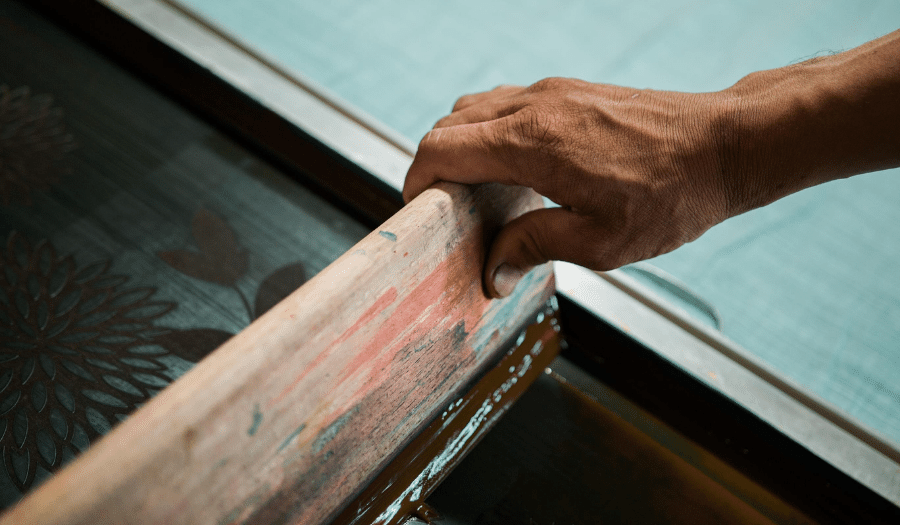When you think of screen printing mesh, you probably think of nylon or polyester screens. While these materials are certainly the most popular choice for screen printing, there are other options available that can provide some unique benefits. One of these is high-tension, low-elongation mesh (HT/LEM). If you're in the screen printing business and have been looking for a way to get the edge over your competitors, you may want to consider HT/LEM.
What Is High-Tension, Low-Elongation Mesh?
HT/LEM is made of high-strength fiber. Much stronger than traditional screens, HT/LEM is still able to maintain a tight weave. Changes in fiber properties, alterations in weaving techniques, and improvements in mesh-finishing processes make the mesh's superior qualities possible. Using HT/LEM in your business can result in several operational benefits.
Benefits of HT/LEM
Long-Term Cost Savings
The initial cost of HT/LEM mesh is higher than other polyester mesh for screen printing, but the long-term cost savings are significant. HT/LEM screens last much longer than traditional screens. This saves you money on replacement screens and allows you to reduce downtime. HT/LEM’s enhanced strength and dimensional stability also allow you to produce higher-quality prints with fewer defects, keeping your customers satisfied and minimizing waste.
Increased Mesh Tension
The higher tension creates smoother print, lays down less ink deposit then lower tensioned mesh, gives you better registration and more speed and productivity on press.
Faster Print Speeds
You'll enjoy quicker turnaround times because of lower off-contact distances. You will also be able to print larger image sizes in the same free mesh area.
Applications for High-Tension, Low-Elongation Mesh
HT/LEM screens are ideal for many printing applications, including
Textiles
The high tension and low elongation of HT/LEM screens makes them perfect for textile printing. The increased tension leads to sharper details and a smoother print.
Graphics
HT/LEM screens are well suited for graphic printing applications. The increased tension results in finer details and less dot gain.
Serialized Numbering
The increased tension of HT/LEM screens is perfect for printing serialized numbers. The numbers will be printed with greater accuracy and clarity.
Glass
The increased tension and dimensional stability of HT/LEM screens make them ideal for glass printing applications. The screens will hold their shape better, resulting in fewer defects.
Variety of Materials
In fact, you can enjoy higher clarity and resolution when printing a wide variety of products, including billboards, t-shirts, outdoor signs, flags, ceramics, and wooden materials.
How to Use High-Tension, Low-Elongation Mesh
The first step toward integrating HT/LEM into your screen printing operation is to find a supplier. Once you have the mesh, you'll need to stretch it tightly over your frame. If you're used to stretching nylon or polyester screens, you'll notice that HT/LEM is much easier to stretch. You may even be able to get away with not using a stretching machine.
Once your screen is stretched, you can start printing. When you're finished, you can clean your screen with a strong solvent such as denatured alcohol. Be sure to follow the manufacturer's instructions for cleaning and storing your HT/LEM screens.
Best Frames for HT/LEM Screens
The high tension of HT/LEM screens requires a strong frame that can withstand it. Aluminum is a strong yet lightweight material that won't warp under the high tension of HT/LEM screens. A wide variety of aluminum frames are available on the market, so it’s easy to find one to fit your needs. Steel is another strong option for HT/LEM screen frames. Steel frames are much heavier than aluminum frames, however, making them more difficult to handle.
You may also want to consider using an adjustable frame, which makes it easy to change the tension of your screen. This is especially helpful if you plan on printing a variety of products with different thicknesses. Wood frames are not recommended for HT/LEM screens because they are not strong enough to withstand the increased tension.
Upgrade to HT/LEM
MicroScreen has been supplying high-tension, low-elongation screen printing mesh for over 40 years. Our HT/LEM is made from the highest quality materials and undergoes a strict quality control process. We offer a wide range of HT/LEM mesh options. Browse our mesh selection here to find one that fits your needs.
